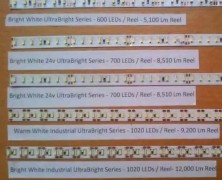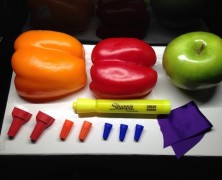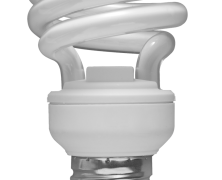How would you like an LED lighting system in your home that matched your body’s natural rhythms, optimizing your mental and emotional well-being? Or how about LED strip lights connected to motion sensors that guide you to the bathroom in the middle of the night? With home automation LED lighting systems, these are fully feasible options for today’s 21st century home owner. A home automation system uses wireless networking technology to program and remotely control common household systems including lighting, appliances, HVAC (heating, ventilation and air conditioning), or the locks of gates and doors, among other common home necessities. Rightfully so, there has been quite a bit of attention given to home automation in recent years. Home automation LED lighting systems, for instance, are more convenient, more energy efficient, and ultimately more exciting than traditional home lighting systems. Such systems exemplify the use of technology for real human benefit, in contrast to many convoluted technological “solutions” that make things even more difficult. Simplicity is a tremendously important feature as the world looks to reduce its carbon footprint through the automation of routine tasks. How do home automation LED lighting systems work? Imagine your home with a full network of LED lights that you can control with an app on your phone or computer. Not quite sure what that would look like? Here are a few examples of the kind of control you would have: Motion sensors turn on/off and dim automated LED lights when you enter or leave rooms Turn off all the interior lights in your home with a simple click of an app button Use your smartphone to remotely monitor and adjust the lighting in your home while away on vacation An intelligent lighting system that turns on the lights at sunset and turns them off...
Understanding The Different Numbers Used In LED Strip Lights...
posted by Flexfire LEDs
When shopping for LED strip lights, you’ll regularly come across numbered terms such as 3020, 3528, and 5050. So what do these numbers mean, and why are they important in your buying process? This simple explanation will help you in understanding the different numbers used in LED strip lights. First, a basic understanding of how the strips themselves are constructed. The LED chips are mounted onto a thin, flexible metal strip that acts as a heat sink, drawing heat from the light chips and allowing them to remain cool during operation. This construction accounts for the “SMD” you’ll often see in strip light specifications, which stands for Surface Mount Device. The four-digit designation refers to the dimensions of the chip itself, in millimeters. A 3528 chip, for example, measures 3.5mm by 2.8mm, while a 5050 chip is 5.0mm by 5.0mm square. These different sizes dictate how many chips can be placed on a strip, which in turn determines its particular light qualities. Each has its benefits, so let’s break them down one at a time. The 5050 chips that Flexfire LEDs uses are actually composed of 3 light diodes, a construction sometimes referred to as a tri-chip. With 3 diodes, a 5050 chip will be brighter than other chips with one individual diode. But while a tri-chip is theoretically three times brighter, their larger size means fewer of them will fit onto a strip’s PCB (Printed Circuit Board). It also means they will generate more heat, requiring a thicker PCB to act as a heat sink. Finally, a tri-chip can be constructed with different types of diodes in the same chip, generating unique visual results. The three diodes can be combined to create millions of different color combinations, making them an excellent choice for...
Why You Should Care About CRI...
posted by Flexfire LEDs
CRI, or Color Rendering Index, is the latest buzzword in consumer lighting circles. With the current phasing out of traditional incandescent bulbs, many consumers are scrambling to understand their remaining choices. Savvy lighting manufacturers understand this, and have invested a great deal in educating customers about things like color temperature, lumens, and now CRI. So how does CRI work? Basically, take a light bulb and shine it onto a few bright, colorful items. How natural do their colors look? Color Rendering Index is a mathematical measure of this, where a light source is tested and given a score from 0-100. Any light bulb, tube, or strip that measures greater than 90 is typically considered “High CRI”, and thus very effective at rendering natural-looking color at a given color temperature. As a point of reference, many of the fluorescent or other types of lighting that people consider “harsh” or “artificial” measure in the 50-70 CRI range. Take a look at the two photos above. In the first photo, under lights rated at CRI 57, the orange bell pepper has lost much of its natural color, appearing almost yellow. Similarly, the green apple, red bell pepper, and yellow marker appear dull and lifeless. In the second photo, under CRI 93 lighting, the colors are much more alive in comparison, down to the white board on which everything is placed. Testing for CRI requires special machinery designed specifically for this purpose. During this test, a lamp is shone onto eight different colors (or “R values”), termed R1 through R8. The lamp receives a score from 0-100 for each color, based on how natural the color is rendered in comparison with how the color looks under a “perfect” or “reference” light source at the same color temperature...
LED Strip Lights: Top 5 Concerns For Lighting Designers...
posted by Flexfire LEDs
LED strip lights deliver extreme versatility in a compact, low profile package. Their customizability is popular with creative lighting professionals everywhere, and this popularity promises to expand greatly as LED prices continue to fall. Obvious applications for flexible strip lights include above cabinet and under counter lighting, and the list continues to grow thanks to increased product development and innovation efforts. Here, therefore, is a quick checklist of the top 5 concerns for lighting designers to compare and choose among different LED strip light products. 1. Lumens Per ____? Every project is different, so determine what matters most before comparing overall lumen output. Lumens per watt, for instance, is most important for LEED and energy-efficient installations, while others may be more concerned with lumens per foot, meter, or reel. 2. CRI Customizable LED chips can be configured to produce a wide variety of lighting conditions. High quality LED strip lights are now capable of producing a color rendering index of 90 and above, rivaling the top lighting options found anywhere on the market today. 3. Certification Choose products that are UL or ETL Listed (U.S. and Europe, respectively), and provide the appropriate LM testing information from the Illuminating Engineering Society to certify claims regarding things like luminous intensity and CRI. 4. Dimming Capability Whether through a simple wall switch or smartphone mobile app, clients want the ability to adjust their lights using a dimmer. Professional grade LED strip lights should be compatible with desired dimming options. 5. Quality of Components LED chip design, heat sink, and PCB quality are among the factors that differentiate one LED strip light from another. These affect light quality, degradation and longevity, not to mention product safety. Look for a supplier who stands by his...
Dangers of Fluorescent Lighting...
posted by Flexfire LEDs
Nearly a decade ago, governments around the world began mandating a move away from traditional incandescent light bulbs as a way to help meet broader energy management goals. At the time, those curly white compact fluorescent bulbs seemed like the best alternative, but further research has revealed the dangers of fluorescent lighting in any form. All fluorescent lights – from industrial tubes to the spiraled household bulbs – contain mercury, and this is the main concern. Mercury is a heavy metal that is highly toxic in even tiny amounts, a serious deterrent to the adoption of fluorescents on a widespread consumer scale. Exposure to mercury is associated with a whole range of major health concerns, from neurological and behavioral disorders to liver, kidney, and central nervous system problems. Mercury exposure is thus an unavoidable concern with this technology, driving many towards complete replacement of fluorescent lights. Aside from the environmental effects of mining and manufacturing, there’s of course the danger associated with product breakage. As we all know, accidents happen, and when a fluorescent bulb or tube breaks, a small amount of mercury vapor is released. This small amount is so dangerous that the U.S. Environmental Protection Agency has filled an entire page on its website with detailed instructions on what to do should this happen to you. Several important steps should be taken immediately, a tall order given most will not have these steps available at their fingertips. Worse, liquid mercury can also be released, finding its way down through carpet fibers and cracks in concrete flooring. This liquid eventually evaporates into the atmosphere, causing local contamination and substantially increased health risks. Even if we manage to avoid breakage, there’s still a major problem when it comes time to dispose of fluorescent bulbs...
Avoid Cheap LED Strip Lights...
posted by Flexfire LEDs
We are often asked about the difference between Flexfire LED strip lights and those found on discount or auction sites such as Amazon and Ebay. To illustrate the many differences, we purchased LED strip lights from Ebay to compare them with the premium LED strips from Flexfire LEDs. The video below reviews some of the key reasons why we think you should avoid cheap LED strip lights. To summarize, here are a few of the key factors to look for when shopping for LED strip lights: Lumens – This is a measurement of the brightness each strip emits. If lumen level is not mentioned, it is best to call and ask, or avoid the seller altogether. Safety Certifications – It is difficult to verify a seller’s safety claims using Amazon or Ebay alone. Check the UL Listing or RoHS registry to make sure the LEDs are safe and do not contain lead or other hazardous materials. Material Quality – Product performance and longevity is determined not just by the quality of the LED chips, but the thickness and materials used in the PCB board, resistors, wires, and soldering. Test Reports – Ask for test reports to verify claims of brightness and longevity. These may include LM-79 testing, IES reports, etc. Warranty, Customer Service, and Installation/Design Assistance – We are here to help design your project, no matter what the size. Our LED strip lights represent the highest quality found on the market today, and will be lighting your project area for many years to...











